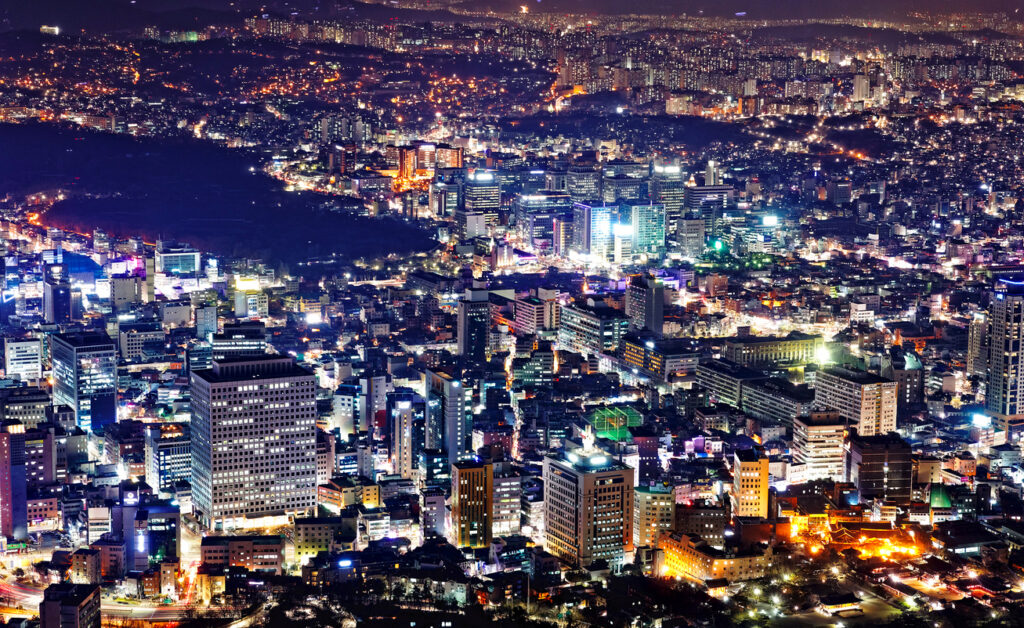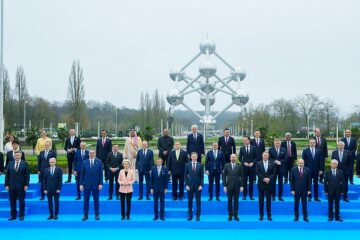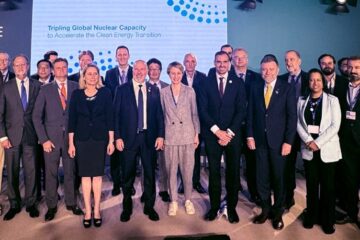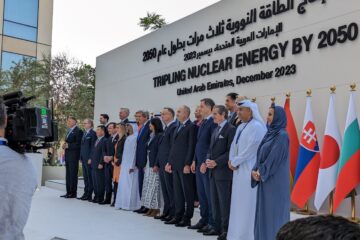It’s time to rethink the South Korean nuclear phase out policy
President Moon Jae-in of South Korea followed through on his campaign pledge to reduce Korea’s reliance on nuclear power only a month after his inauguration in May 2017. He quickly announced Korea would stop building new reactors and not life extend those in operation. The objective was to replace nuclear with other clean energy options over time. This policy was developed following the 2011 Fukushima accident in Japan and a 2016 movie (Pandora) which fictionalized a similar accident in Korea. Now, with the next presidential election coming up in March of 2022, this policy is becoming an election issue – as it should.
We first wrote about Korea’s current anti-nuclear policy three years ago when they decided to shut down the Wolsong 1 reactor and decommission it. So far Korea has only closed two reactors. Kori unit 1, the nation’s oldest PWR, was closed rather than life extended in 2017; and Wolsong 1. The narrative is that Wolsong 1 was closed only 3 years before its end of life. Although that would have been when its licence expired, it was far from its end of life. Just a few years earlier, in 2011, Wolsong 1 had been refurbished, a life extending process for pressurized heavy water (CANDU) plants, where the key nuclear components are all replaced allowing for another 30 years operation. There is no doubt this unit was sacrificed to support the phase out policy and should be operating today, together with Wolsong units 2, 3 and 4, providing clean carbon free energy to the Korean grid.

In December 2020 Korea issued its Ninth Basic Plan for Electricity Supply and Demand for the years 2020-2034. This plan suggests that supply will increase by just over 50% while reducing dependence upon coal and nuclear power. 30 coal plants will reach their end of life by 2034 reducing the share of coal in the system from 40 to 15%. Unfortunately, 24 of these coal plants will be converted to gas. While we know that gas produces less carbon emissions than coal, entrenching fossil generation for the long term is not a path to net zero emissions. Today Korea’s electricity sector emits over 500 g/kWh and has a long way to go to decarbonize.
The goal is to increase renewables from its current 6.5% to about 42 percent of capacity. Nuclear will be reduced from its current 25% to just over 10%. It is always important to remember that plant capacity is not the right metric for comparison since renewable sources of energy such as solar and wind produce much less energy than equivalent sized coal and nuclear plants due to the limited time the wind blows and the sun shines. This means more plants are needed to produce the same amount of electricity.
And these plants all require land, and lots of it. This creates further challenges as Korea is a small mountainous country with limited space to implement large scale renewable solutions. The most promising source of renewables is offshore wind. In February, plans to invest $43.2 Billion in the world’s largest single offshore wind project with a capacity of 8.2GW (today Korea has only 1.67 GW of wind capacity) by 2030 were reported. This is a technically challenging project and claims this would produce the energy equivalent to the output of six (1.4 GW) nuclear reactors is somewhat deceptive because as stated above, a nuclear plant will produce more than double the energy as a similar sized wind turbine, i.e., 4 GW of nuclear would produce more energy in a year than 8 GW of wind.
Korea is a global industrial powerhouse and as the world’s 9th largest energy consumer in 2019 needs access to economic reliable energy to fuel its dynamic economy. This is not easy as South Korea has little to no domestic energy resources and is one of the world’s top five importers of liquefied natural gas (LNG), coal, and oil.
Trying to decarbonize without nuclear power means that Korea will lock in fossil use (gas) for decades to come. In addition to increasing risk to their energy security, recent reports are suggesting the era of cheap gas is coming to an end. Spurred by increasing global demand, LNG prices in Asia have increased about six-fold in the last year.
Korea once made a bold decision to implement nuclear power in a big way to reduce its dependence on foreign supplied fossil fuel and provide large amounts of low carbon economic and reliable energy to fuel its growing economy. Through dedication and hard work, it went from an importer of nuclear technology to becoming self sufficient and then exporting the technology; its export to the UAE is a source of great pride.
This also resulted in a very high level of both technology and human development. Nuclear power creates high quality jobs for thousands of Koreans. This expertise is valued all over the world. Unfortunately, it doesn’t take long for negative policies to start to degrade this expertise. Young people will not choose nuclear as a career if government policy is to phase it out even if there are still years of operations that require trained experts. And for those more experienced, there is a whole world out there that would value their excellent Korean qualifications.
The International Energy Agency (IEA) has stated that net zero emissions cannot be reached without nuclear continuing to play a critical role. Governments around the world are becoming more vocal in their agreement. In Canada and the United States, both governments have stated unequivocally that nuclear is needed to reach these goals. In Europe a group of 87 parliamentarians have signed a letter supporting nuclear to be included in the EU taxonomy as a sustainable clean generating option. China and Russia are pursuing large nuclear expansions and Japan continues to declare that nuclear must be part of its energy mix.
Nuclear power in Korea has been an unqualified success and is the example to be used for other nations wisely choosing to deploy nuclear as part of their climate and energy infrastructure. Korea needs nuclear to maintain its industrial base and meet its climate goals. And the world needs Korean nuclear experience and expertise. The time is right for a discussion with the Korean people on the nuclear phase out policy – and an election is a good time to have it.




